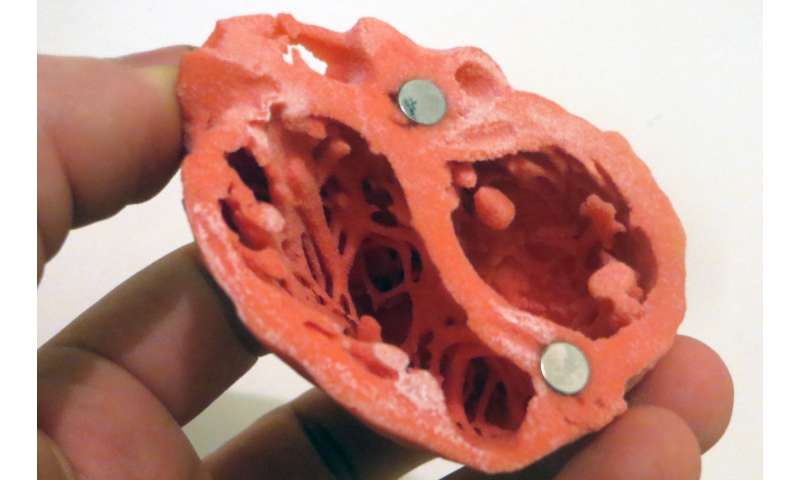
Options to treat heart valve disease are expanding, allowing patients to avoid surgery when possible, according to a new joint clinical practice guideline from the American College of Cardiology and the American Heart Association. The new “2020 ACC/AHA Guideline for the Management of Patients With Valvular Heart Disease” published today in the AHA’s flagship journal Circulation and in the Journal of the American College of Cardiology.
About half of all people ages 65 and older have some form of valvular heart disease. If left undiagnosed or untreated in a timely fashion, valvular heart disease can become more severe and can ultimately lead to heart failure and death. Valvular heart disease can affect one or more heart valves—the structures responsible for regulating blood flow to and from the heart. The heart has four chambers for circulating blood into the heart and out to the lungs and the body, and each chamber is separated by a valve. The four valves of the heart—mitral, tricuspid, aortic and pulmonic—all have leaflets, or cusps, that work together to open and close to regulate blood flow. In a healthy heart, the valves and cusps are properly formed and flexible, and they open and close completely for blood to flow through the heart, while also preventing blood from flowing backward into the chambers.
The most common causes of valvular heart disease among adults in the U.S. are age-related thickening and calcification or anatomic valve variants, which may be inherited in some families. These valve conditions can lead to an abnormal opening or closing of the heart valve, which manifests either as:
- stenosis—the valve is narrow or stiff, which partially restricts blood flow, or
- regurgitation—the valve leaks, allowing blood to flow backward within another chamber of the heart.
“Current research and new technology continue to transform the treatment of heart valve disease, as updated lifestyle and medication guidance evolve, and less invasive procedures have replaced traditional surgery for many patients,” said Catherine Otto, M.D., FACC, FAHA, co-chair of the guideline writing committee, the J. Ward Kennedy-Hamilton Endowed Chair in Cardiology, professor of medicine, and director of the Heart Valve Clinic at the University of Washington School of Medicine in Seattle.
Valve replacement using a catheter, referred to as transcatheter valve implantation or TAVI, is less invasive than surgical replacement, and its use is expanding to more patients due to research showing comparable outcomes to surgical replacement.
Aortic stenosis, a narrowing of the aortic valve that is found in about 20% of Americans over age 65, is a condition that can be treated with this less-invasive approach. Aortic stenosis restricts blood flow out of the heart, and severe cases may require intervention to replace or repair the aortic valve. Patients and their health care teams should consider factors surrounding the lifetime risks and benefits associated with both the type of valve used (mechanical or bioprosthetic) and the procedure itself (transcatheter or surgical).
Management of “leaky” heart valves, a condition known as valve regurgitation, has improved thanks to more durable treatment options and lower risks surrounding procedures to repair or replace the valve involved. This is promising because earlier intervention can offer symptom relief and potential prevention of the irreversible consequences of too much blood volume in the left ventricle.
The writing committee notes that the optimal timing of intervention for stenosis or regurgitation issues depends on the severity of the valve condition, as well as the safety and long-term effectiveness of treatment options. As ongoing clinical research data evolves, the recommended timing of interventions will shift to earlier in the disease course for some patients.
Additionally, the committee notes there are limitations in the research used for some areas of the guideline due to the small numbers of patients with specific types of valvular heart disease. More disease-specific studies and patient-centered trials that focus on each stage of the disease process are recommended.
Patients who have severe valvular heart disease and are being considered for valve repair or replacement should be evaluated by a specialized team working with a primary or comprehensive valve center. A comprehensive valve center (Level I) has the resources and capabilities to perform a full range of interventional and surgical valve procedures. A primary valve center (Level II) can perform TAVI and more limited surgical procedures.
“Clinical studies over the past decade have increased awareness of the prevalence and importance of valvular heart disease in contributing to excess mortality, morbidity and a reduced quality of life, particular in older people,” said Otto. “Simultaneously, clinical studies have demonstrated the safety and effectiveness of new, less-invasive approaches for treatment of heart valve dysfunction. Integration of this expanded evidence base, in conjunction with expert clinical experience, will furnish both providers and patients with the guidance needed to ensure optimal outcomes for patients with heart valve conditions.”
The new clinical guideline aims to provide health care professionals with concise, evidence-based, updated recommendations to optimize care and management of patients with valvular heart disease. This guideline replaces the 2014 guideline and a focused update from 2017.
In developing the recommendations, the writing committee used evidence-based methodologies based on an extensive review of available data through March 1, 2020. Like all ACC/AHA clinical practice guidelines, the review focused on trials, studies, registries, systematic reviews and expert opinion.
“There is a knowledge explosion in medicine today, which can overwhelm the clinician,” said Rick A. Nishimura, M.D., MACC, FAHA, co-chair of the writing committee and the Judd and Mary Morris Leighton Professor of Cardiovascular Diseases at the Mayo Clinic in Rochester, Minnesota. “This is particularly true in the area of valvular heart disease, in which multiple investigational trials are being rapidly performed and released, so that it becomes extremely difficult for an individual clinician to keep up with optimal treatments for each specific patient. The Valvular Heart Disease Guideline brings together experts in the field who review all the data and arrive at a consensus opinion for best treatment, outlined in the Class Recommendations.”
Source: Read Full Article
